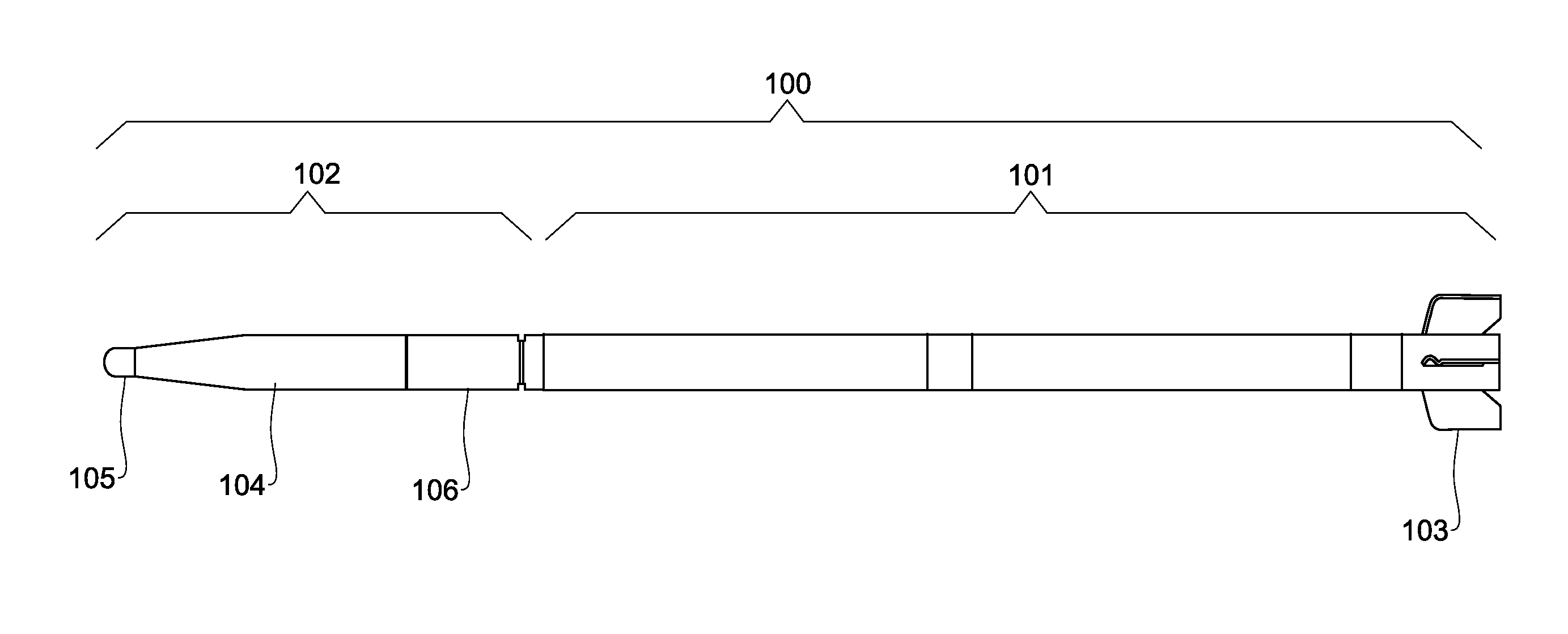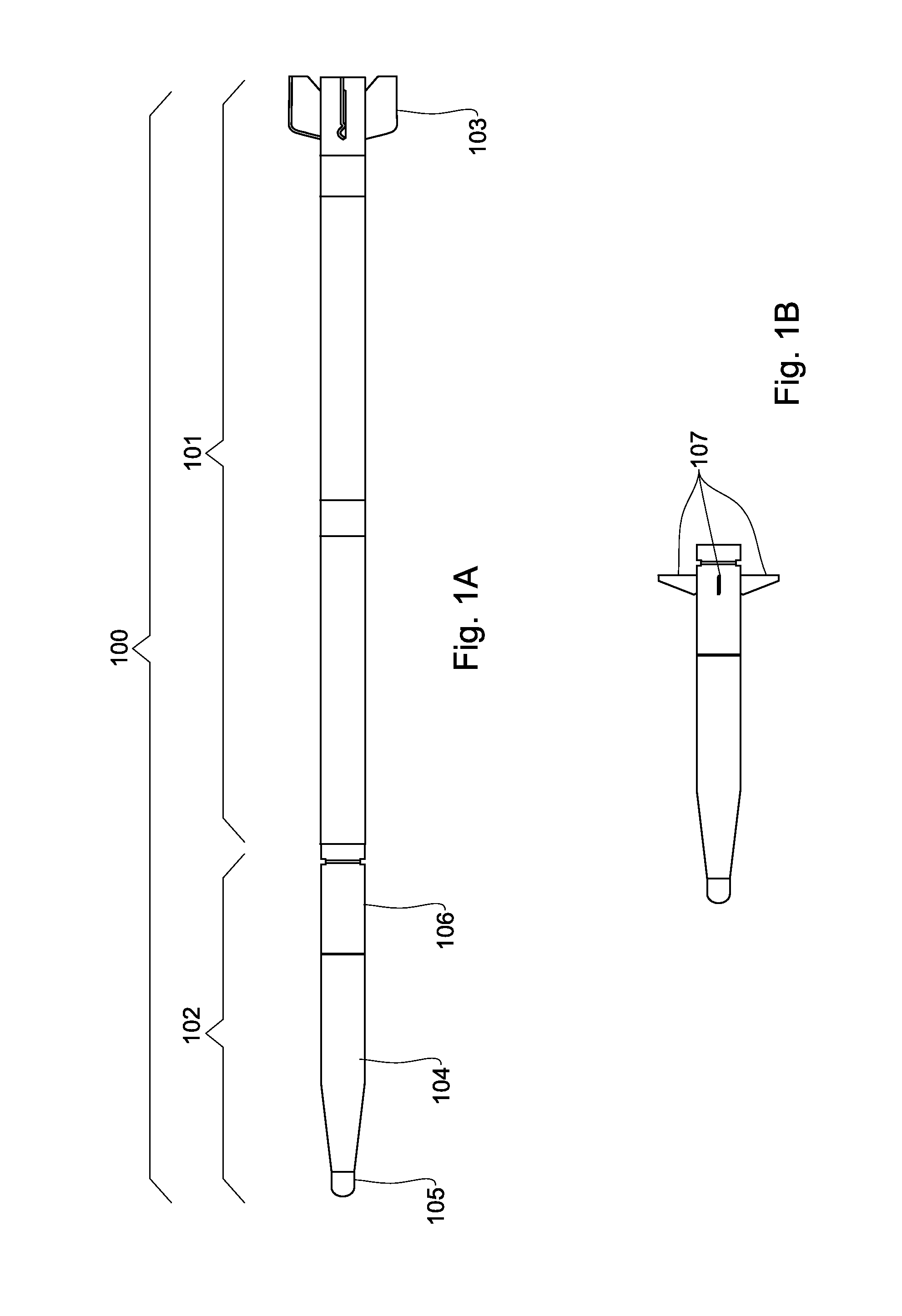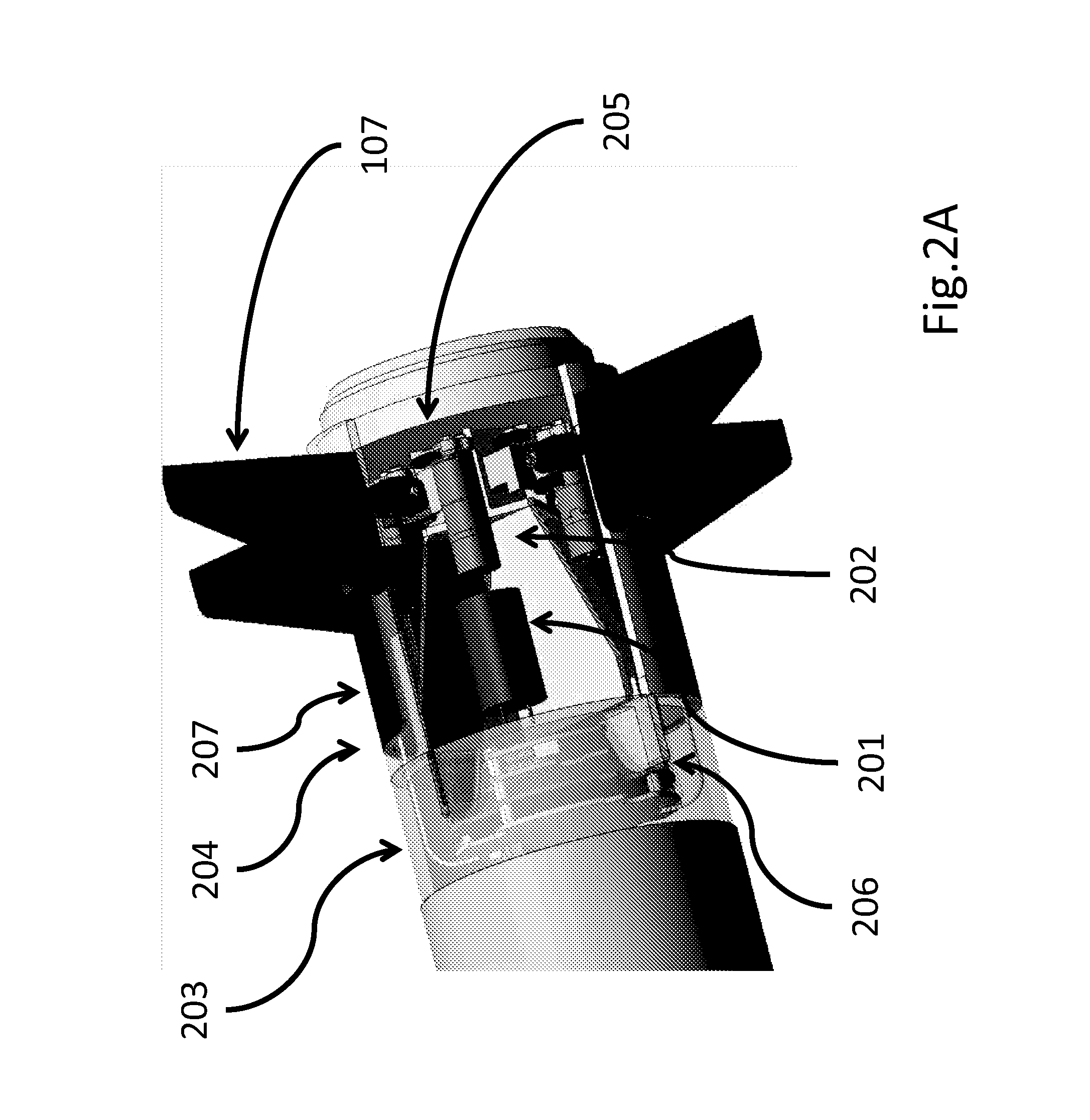Anti-rocket system
a rocket system and anti-missile technology, applied in direction controllers, instruments, using reradiation, etc., can solve the problems of serious threat to the morale of the population, damage to property and humans, and damage to the ground to ground rocket such as the grad
- Summary
- Abstract
- Description
- Claims
- Application Information
AI Technical Summary
Benefits of technology
Problems solved by technology
Method used
Image
Examples
Embodiment Construction
[0113]Attention is first drawn to FIG. 1A, showing a schematic illustration of an intercept missile, in accordance with certain embodiments of the invention. Thus, an interception missile 100 includes a solid motor 101 called also engine section, and a main section 102 which is seeker-less. The engine section further includes (e.g. wrap around) fins 103 which constitute an integral part of the solid motor and serve for stabilizing the missile during the boost and coast phases of the flight until separation occurs. The main section 102 consists of warhead 104 including its associated proximity fuse 105 and electronic section 106.
[0114]Note that in accordance with certain embodiments, the engine section is in fact an engine of a rocket (e.g. GRAD, MLRS etc.). The engine serves two main purposes: for boosting the interceptor until sufficient energy is accumulated and for increasing of the interceptor's ballistic coefficient during the coasting phase, whereupon a separation stage occurs...
PUM
 Login to View More
Login to View More Abstract
Description
Claims
Application Information
 Login to View More
Login to View More - R&D
- Intellectual Property
- Life Sciences
- Materials
- Tech Scout
- Unparalleled Data Quality
- Higher Quality Content
- 60% Fewer Hallucinations
Browse by: Latest US Patents, China's latest patents, Technical Efficacy Thesaurus, Application Domain, Technology Topic, Popular Technical Reports.
© 2025 PatSnap. All rights reserved.Legal|Privacy policy|Modern Slavery Act Transparency Statement|Sitemap|About US| Contact US: help@patsnap.com



